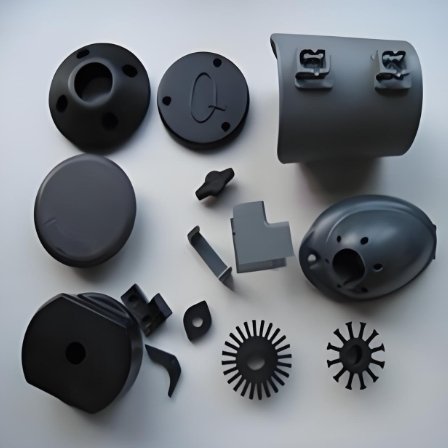
Multi-shot electronic injection molding is transforming the electronics industry. It allows different materials to combine in a single molding process. This method improves product quality, reduces costs, and increases efficiency. Mold makers use this technology to create durable and complex electronic components.
This article explores the benefits, process, applications, and challenges of multi-shot molding in electronics.
1. What Is Multi-Shot Injection Molding?
Multi-shot injection molding is a process that combines multiple materials or colors in a single mold. It eliminates the need for secondary assembly.
1.1 How It Works
- The mold injects one material into the cavity.
- A second material is injected over or next to the first.
- Some processes use three or more materials.
1.2 Types of Multi-Shot Molding
- Two-Shot Molding – Uses two different materials in one mold.
- Overmolding – Covers one part with another material.
- Co-Injection Molding – Injects two materials simultaneously.
2. Benefits of Multi-Shot Injection Molding for Electronics
2.1 Improved Product Durability
- Stronger bonds between materials.
- No need for adhesives.
2.2 Enhanced Design Flexibility
- Allows complex shapes.
- Combines soft and rigid materials.
2.3 Increased Production Efficiency
- Reduces assembly steps.
- Lowers labor costs.
2.4 Better Electrical Insulation
- Enhances safety and reliability.
- Protects sensitive circuits.
2.5 Reduced Waste
- Uses materials efficiently.
- Cuts down on defective parts.
3. Applications of Multi-Shot Electronic Injection Molding
3.1 Connectors and Sockets
- Combines insulating and conductive materials.
- Ensures secure electrical connections.
3.2 Keypads and Buttons
- Integrates soft-touch materials for user comfort.
- Improves durability and wear resistance.
3.3 Wearable Electronics
- Seals components against moisture.
- Enhances flexibility and comfort.
3.4 Housings and Casings
- Provides shock resistance.
- Improves heat dissipation.
3.5 LED Components
- Uses transparent and reflective materials.
- Enhances light output and efficiency.
4. Role of a Mold Maker in Multi-Shot Molding
4.1 Precision Tooling Design
- Creates high-tolerance molds.
- Ensures perfect material alignment.
4.2 Material Selection
- Chooses compatible materials.
- Balances strength, flexibility, and conductivity.
4.3 Process Optimization
- Controls temperature and pressure for consistency.
- Reduces defects and cycle time.
4.4 Quality Control
- Uses automated inspection for defects.
- Ensures strong material bonding.
5. Challenges in Multi-Shot Electronic Injection Molding
5.1 Material Compatibility
- Some plastics do not bond well.
- Requires careful material selection.
5.2 Complex Mold Design
- Requires precise tooling.
- More expensive than single-shot molds.
5.3 Higher Equipment Costs
- Needs specialized machines.
- Increases initial investment.
5.4 Longer Setup Time
- More complex than standard molding.
- Requires expert mold makers.
6. Advanced Techniques in Multi-Shot Molding
6.1 Rotary Platen Molding
- Rotates parts for multiple shots.
- Ensures precise material placement.
6.2 Core-Back Molding
- Moves the mold core to create space for another material.
- Used for seamless multi-material integration.
6.3 Transfer Molding
- Transfers pre-molded parts to another cavity.
- Improves material distribution.
6.4 Multi-Component Molding
- Uses different plastic formulations in one cycle.
- Reduces processing time.
7. Future of Multi-Shot Molding in Electronics
7.1 Smart Materials Integration
- Combines self-healing and conductive materials.
- Enables adaptive electronic components.
7.2 Miniaturization of Electronic Parts
- Produces smaller, more complex designs.
- Improves wearable and IoT device performance.
7.3 Sustainable Material Use
- Develops biodegradable plastics for electronics.
- Reduces electronic waste.
7.4 AI-Driven Process Control
- Uses machine learning to optimize injection parameters.
- Improves precision and reduces defects.
Multi-shot electronic injection molding is revolutionizing electronic manufacturing. It enhances design flexibility, product durability, and efficiency. Mold makers play a crucial role in ensuring material compatibility, tooling precision, and process optimization.
With advanced techniques and smart materials, multi-shot molding will continue shaping the future of high-performance electronic components.
